By Margaret Smith, PhD
Albert Lea Seed Forage Agronomist
Survival of winter wheat, rye, and barley is inconsistent across the Upper Midwest this spring. It’s time to make a final evaluation of these small grain stands and pull the trigger to keep or replace these crops.
Why do or why don’t small grains survive the winter?
Small grains’ ability to survive the winter is based on a number of factors, including:
1. Genetics. In general, winter barley is less hardy than winter wheat, which is less hardy than winter rye. There are varietal differences, though, within each species.
2. Fall planting date. For the best chance of winter survival, small grains should be planted at least a month before freeze up for plants to grow 4-5 leaves and develop a crown. Plants this size are able to store enough energy to survive winter respiration.
3. Rate of temperature change in the fall. Gradual cooling in the fall allows for incremental plant physiological changes that contribute to development of winter hardness in the plant crown (ideally, 1” below the soil surface).
4. Soil moisture conditions. Dry soils in the fall prohibit or delay plant emergence. Dry soils in winter can result in sub-freezing temperatures reaching and damaging plant crowns.
5. Consistent cold weather during the winter. Consistent winter weather promotes plants remaining dormant. Repeated cycles in to and out of dormancy, however, uses stored carbohydrate reserves and stresses plants.
6. Snow cover “insulation.” Snow cover insulates plant crowns and moderate soil temperature changes, which contributes to continued dormancy.
7. Winter wind exposure when plants aren’t insulated with snow. Winds desiccate plant tissues, stressing plants and making them more susceptible to freezing and fluctuating temperatures.
8. Consistent and gradually warming temperature once plants break dormancy in the spring. Sudden drops in temperatures resulting in a hard freeze after plants have completely broken dormancy can result in crown damage and death.
WINTER HARDINESS SUMMARY
Ideally wheat plants should have at least 1-2 tillers and 3-5 leaves, as well as a good crown root system development, when going into the winter. A fall with open field conditions, gradually falling soil temperatures, and little snow cover until freeze-up, will contribute to winter hardiness development by the wheat crop. During the winter, moist and firm soil, as well as at least an inch snow cover, will help buffer and insulate crown temperatures and increase the chances of winter survival.
Direct cold injury is not the only source of winter injury. Under dry soil conditions, wheat plants may suffer from desiccation. This can kill or weaken plants, and is actually a more common problem than direct cold injury.
Source: Factors to Consider in Winter Survival of Wheat, Lollato, et al., 2019, Kansas State University
Survival for the 2024-2025 season
Drought conditions in Fall 2024 ranged from moderate to severe in the Upper Midwest (see U.S. Drought Monitor Map, October, 2024 below). Conditions were even more severe farther west and south, but conditions were normal in the northeastern U.S. Planting was delayed on some winter wheat, rye and barley waiting for moisture; in other areas, seed went into completely dry ground and sat patiently waiting 30 days or more for rain.
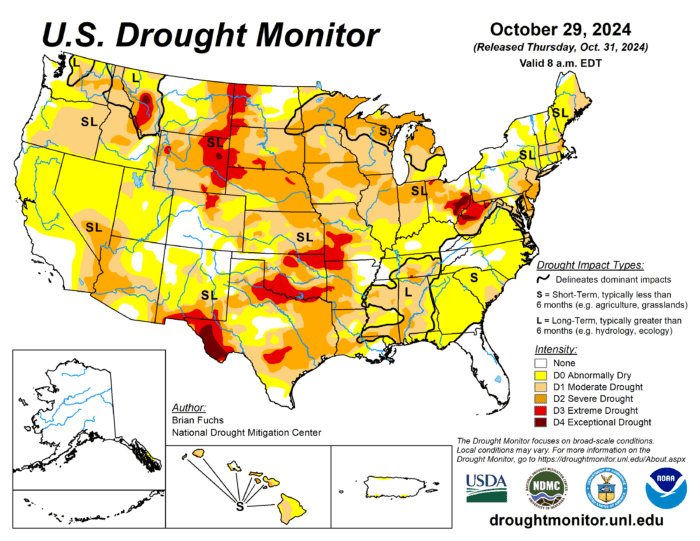
Irregular moisture conditions were common across fields last fall, resulting in uneven emergence like in this field of hard red winter wheat, planted September 14, 2024 near Hutchinson, MN. The photo was taken November 24 (courtesy of Matthew Fitzgerald).
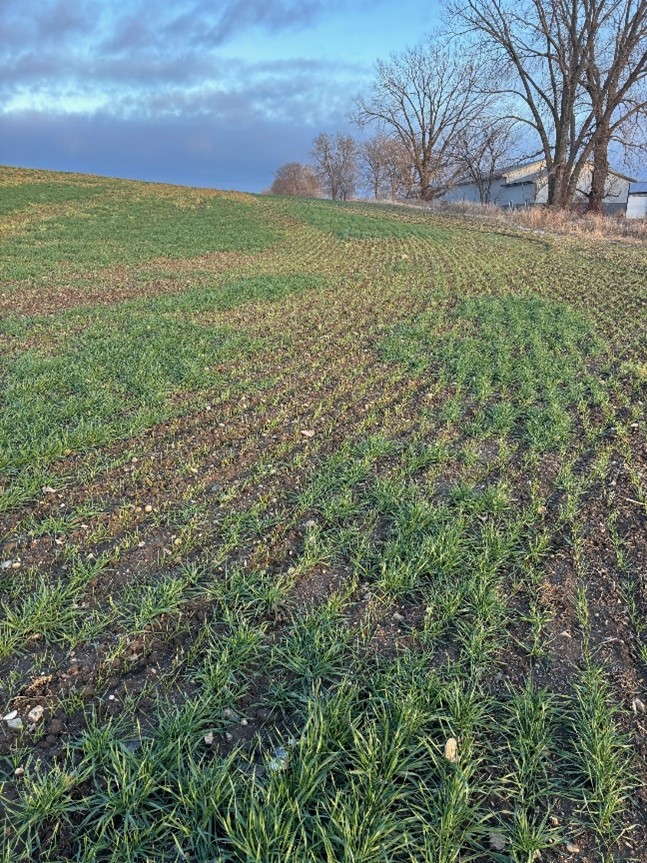
How are Plant Stands this Spring?
Small grain stands this spring are slow to green up and that may indicate stand loss. Drought conditions have lessened but still persist this spring (see U.S. Drought Monitor Map, March 25, 2025 below).
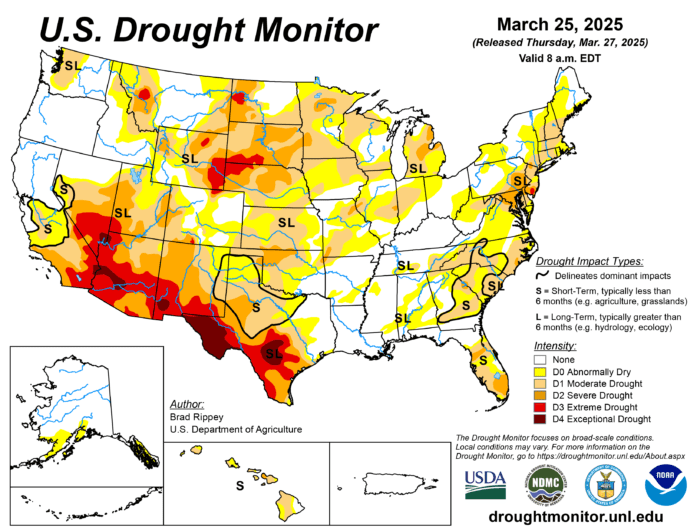
Late March and early April in the Upper Midwest are the time to do a more thorough evaluation of winter small grain populations.
This same hard red winter wheat field shown in the photo above has yet to green up as of March 20, 2025 (photo below, courtesy of Matthew Fitzgerald). With a few more warm days, plants should be developed enough to evaluate this stand.
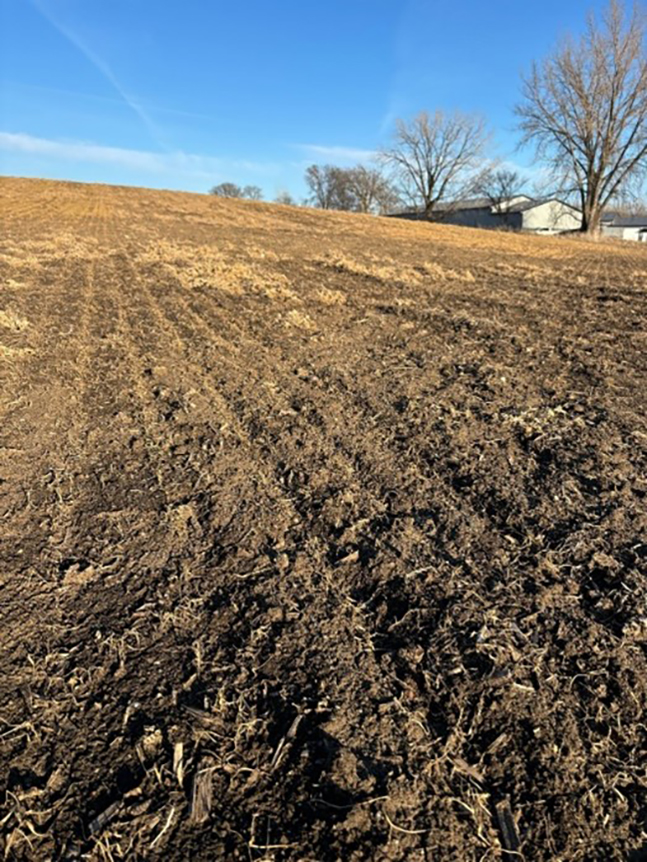
Assessing Winter Small Grains for Survival
Drive-by views are a start, but don’t get discouraged. There are small green plants in many fields that aren’t yet evident from the field edge. In many fields, once plants have started to green up, you can make a quick assessment with a walk through the field and a shovel. Where the stand looks fair, but you still question its viability, use a ft square or tape measure to take plant stand counts
There are three levels of evaluation of small grain stands.
1. The plants have come though the winter well. The stand is uniform and greening up consistently across the field. The decision for these fields is easy; they are clearly “keepers.”
2. Half or more of the plants have come through the winter. Green up may be inconsistent and spotty across the field. You’ll benefit from taking plant stand counts in these types of fields to help aid your decision making. You may or may not decide to keep these stands, based on both the total plant stand and its uniformity.
3. Plants appear brown and are slow to green up. Wait a week on these fields and go back for a closer look. If you see little or no sign of green up, and after digging plants and finding few live roots, there’s no need to count the plant stand. These fields are done and it’s time to implement “Plan B.”
In the examples below from west-central Iowa (photos taken March 17, courtesy of Scott Shriver), the cereal rye on the right side of this field has greened up nicely, and—even evaluated from the field edge—is a keeper stand.
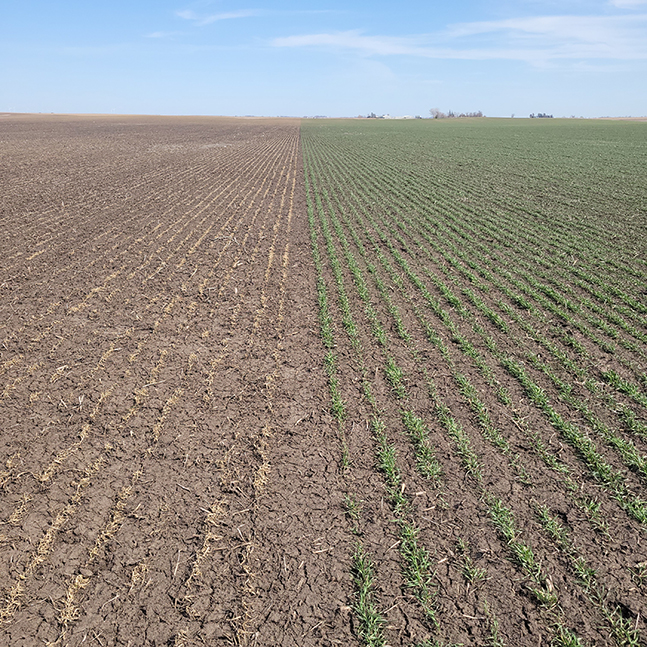
The winter barley on the left side of the field doesn’t look promising, and needs a closer look.
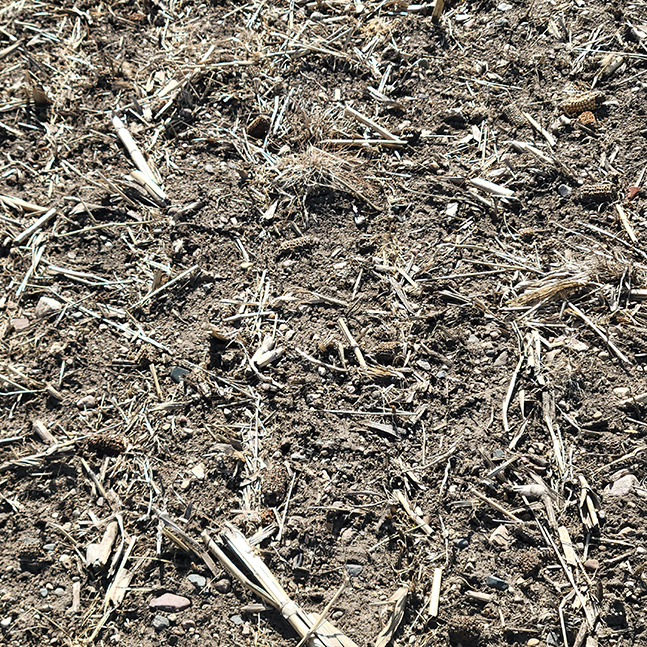
Even with a close examination, there are almost no live plants. This is an easy decision to abandon this crop.
This wheat stand from the same farm (also taken March 17) looks a bit thin but certainly warrants a more detailed plant count.
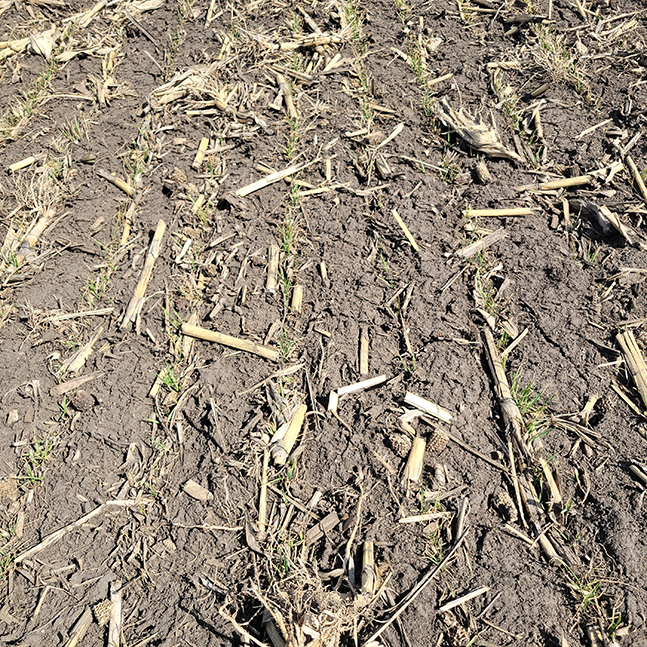
Here’s a healthy spelt plant from north-central Iowa (photo taken March 24, 2025). It has two tillers, but is that enough?
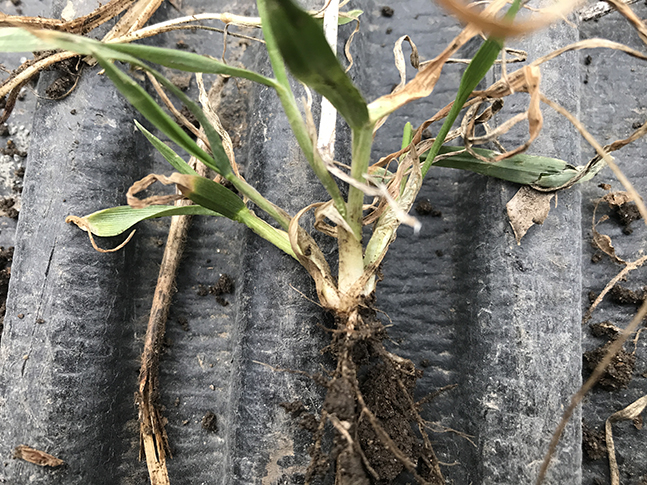
There is a glimmer of hope for this winter spelt in northern Iowa, with certain rows—apparent twins row straddling the old soybean rows—greening up and consistent population within those rows. But interrows in the old soybean row middles have very few living plants. With this type of plant growth, wait another 3-4 days and reevaluate.
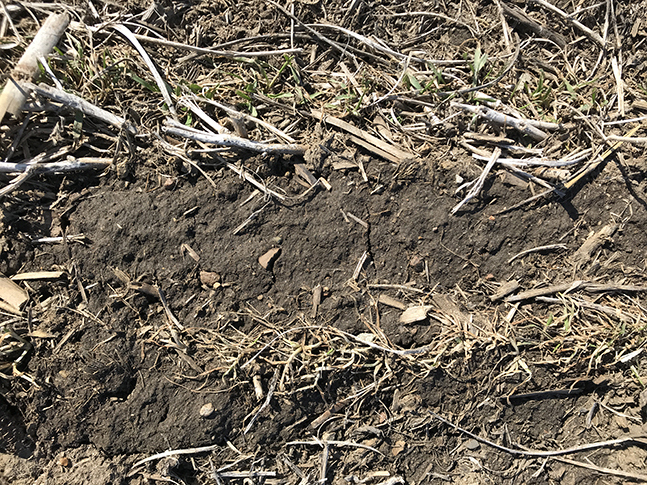
Educators at the University of Wisconsin provide these scouting guidelines for small grains in the spring:
“Start with a visual inspection of the field. Look for areas where the wheat is green and growing, as well as spots where plants look dead or missing. Remember, brown leaves don’t always mean winterkill, and green leaves don’t always mean the crop has survived . The best way to check the health of individual plants is to dig them up and look for new white roots near the crown. New roots should be white, without any dark or soft spots. When evaluating a stand, count the number of plants per square foot or plants per foot of row. Using a square foot quadrat can be helpful.
Make sure to distinguish between whole plants and tillers when counting (see the Winter Wheat Development and Growth Staging Guide). Count plants at several random spots (at least five) in the field to get an accurate representation.”
Source: Winter Wheat Winter kill Stand Assessment, Elmquist, et al, March 2025, University of Wisconsin.
KEEP OR TERMINATE A MARGINAL PLANT STAND?
A good plant stand for winter wheat, barley and open-pollinated cereal rye is 1,000,000 pants per acre. This is equal to 23 plants per ft2 and 14 plants per ft of row in 7.5 inch rows.
But what stand is good enough to keep? To keep the crop, you should have a minimum of 12-15 live plants per square foot or 7-9 plants per foot of row. (This is a stand of 650,000 plants per acre.) This stand level won’t provide maximum yields, but does avoid additional costs for termination, additional seed, and replanting to another crop.
The number of plants per sq ft or per acre is not the only factor influencing whether to keep or terminate a stand. How uniform is that stand across the field? Poor stands tend to be irregular across fields depending on soil type, soil moisture, and slope which influences exposure to winter winds and snow deposition.
With gaps in a stand, conventional growers may be able to control weeds with herbicides, though more than one application may be needed.
Organic growers need far more uniform stands to warrant keeping them. A thick, uniform stand is the best weed control available. Plants can compensate and fill in for one missing row in a drilled stand, but with gaps of two or more adjacent rows and/or more than about 5 ft along the length of the rows, both yield and weed control will suffer. Terminate stands with low populations and irregular stand gaps within the field. A good, solid stand for a spring-planted crop will benefit overall yield and the better weed control will yield economic benefits in both this year’s and following crops.
___
Resources:
- Assessing Winter Wheat Stands, SDSU, 2023
- Evaluating Winter Wheat Plant Stands, UMN
- Factors to Consider in Winter Survival of Wheat, Kansas State University
- Evaluating Your Winter Wheat and Rye Stands, UMN, Jan 1, 2024
- Winter Wheat Winterkill Stand Assessment, UW, March 7, 2025
- Evaluating Freeze Injury and Winterkill of Small Grain Forages, King’s AgriSeeds
- Is Excessive Growth Effecting the Winter Survival of Small Grains?, Penn State
